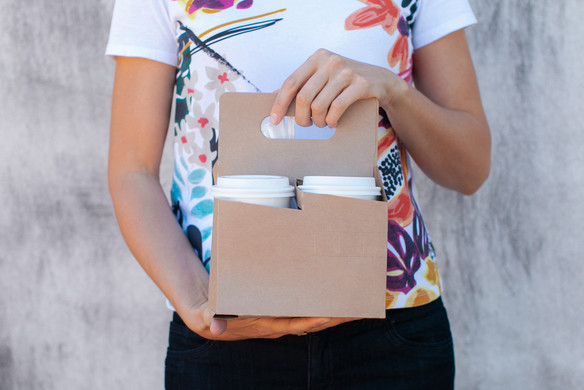Table of contents
This article was contributed by Lauren Manning and originally appeared on Food Dive.
Editor’s note: The data below shows how the pandemic has made customers care more about sustainable packaging when purchasing food items. This consumer trend cuts across industries — our Future of Retail report found that 27% of consumers also want to see environmentally friendly packaging from retailers. Learn more about how to make your packaging more eco-friendly — and reduce your packaging footprint overall.
Dive brief
- Two-thirds (67%) of consumers consider it important that the products they buy are in recyclable packaging, and the same percentage consider themselves environmentally aware — the same share as before the pandemic, according to Trivium Packaging’s 2021 Global Buying Green Report. The report is based on a survey conducted with Boston Consulting Group with 15,000 consumers in Europe, North America, and South America.
- More than half (54%) take sustainable packaging into consideration when selecting a product. Younger consumers — those 44 years and younger — are leading the charge, with 83% reporting that they are willing to pay more for it, compared to 70% of all consumers. However, the pandemic has caused about one in three consumers to lower the importance they place on sustainable packaging.
- Despite their willingness to support sustainable packaging, many consumers are misinformed about the recycling rates of different materials. Survey respondents believed that 48% of metal was recycled, when the real rate is 64%, according to figures from Global Recycling and the International Aluminum Institute cited in the report. However, the recycling rates for glass, plastic, and liquid cartons were much lower than consumers expected.
Dive insight
Despite the pressures of the pandemic, sustainable packaging has emerged as a top priority as consumers show more interest in their environmental footprint and that of the overall food system. Trivium’s research tracks with other efforts to quantify consumers’ sentiments during this time. A 2020 Study from Shorr Packaging found that two-thirds of shoppers who have made changes in their purchasing behaviors during the pandemic are paying more attention to packaging. Fifty-eight percent of survey respondents reported being “likely” or “very likely” to select products that use recyclable or reusable packaging.
This is especially true among younger consumers. Millennials are more likely to buy sustainable products than other generations, while Gen Z is emerging as a generation that is willing to spend more for products that meet their sustainability standards.
In response to that unwavering demand, a number of consumer brands have made strides toward more sustainable packaging materials over the past year. Nestlé recently earmarked 2 billion Swiss francs ($2.1 billion) to support eco-friendly alternatives. A range of manufacturers are testing packaging that uses upcycled food and recycled materials, and swaps plastic for paper or other seemingly more sustainable options.
Plastic has been top of mind for many consumers. The report from Trivium — a manufacturer of metal packaging — found that 55% of consumers considered plastic as “harmful,” and 63% connected the material with ocean pollution. A number of frozen food manufacturers, including Danone and Mondelez, have signed on to the Ellen MacArthur Foundation’s Global Commitment to eliminate plastic pollution. This effort aims to achieve 100% reusable, recyclable, or compostable plastic packaging by 2025.
Swapping out conventional packaging for eco-friendly alternatives is not an easy task, however. In many cases, switching to sustainable packaging materials can cost a company 25% more compared to traditional packaging. These newer options may not perform like their conventional counterparts either, especially when it comes to product freshness and being able to withstand temperature changes. Consumers’ willingness to pay more for products with sustainable packaging could help the industry absorb the increased costs around making the switch.
Despite the clear momentum toward sustainable packaging, Trivium’s study suggests that there is still more work to be done in educating consumers — especially about which materials are and can be recycled. The report blamed the misconceptions to mixed messages in labeling and marketing materials around packaging, as well as different local recycling practices.
Figuring out the most effective way to help consumers make educated purchasing decisions is not a new endeavor for the food industry. Although consumers report being influenced by sustainability initiatives, many do not notice these claims on packaging, according to a 2018 study from QuadPackaging and Package Insight. Many attribute the ineffectiveness of on-pack sustainability messaging to the serious label fatigue that some consumers suffer. Brands that want to reach consumers through sustainable packaging efforts may need to do more than simply add a label claim or logo to catch consumers’ attention.
This article was written by Lauren Manning from Food Dive and was legally licensed through the Industry Dive publisher network. Please direct all licensing questions to [email protected].
![]()











